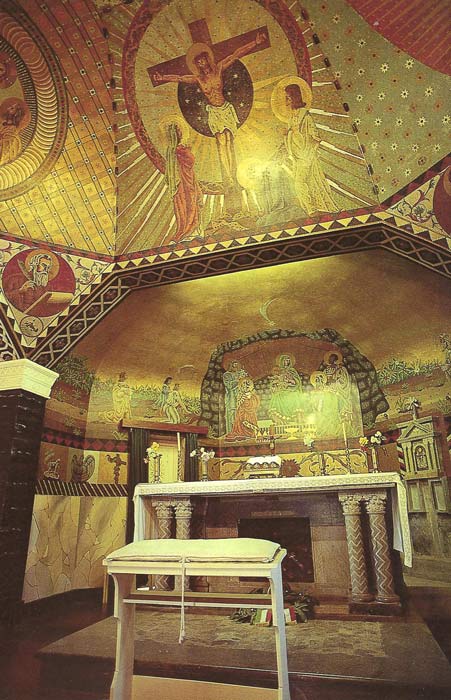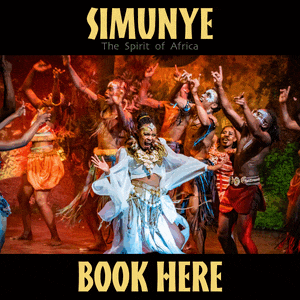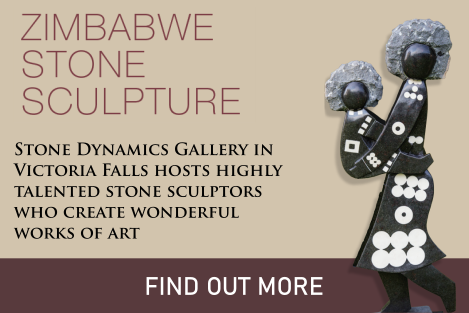Zimbabwe ReligionTraditional Zimbabwe Religion has a monotheistic faith rooted in the belief in one supreme creator.....
Like many African communities, traditional Zimbabwe Religion has a firm monotheistic faith rooted in the belief in one supreme creator. Today this has been melded with the Christian message into the syncretic faith – part Christian, part tradition – that is followed by at least fifty per cent of the people. The traditional aspect of this dual-sided faith is rooted in the custom of channelling all prayers to the supreme creator, Mwari (God), through family ancestors. In times of trouble and misfortune worshippers consult a spirit medium for advice, for they are believed to have direct contact with the ancestors. The mystical atmosphere of the caves used by the first inhabitants of Zimbabwe, the “San”, thousands of years ago for their unique and extraordinary art, profoundly influenced later communities. One such communities, the Mbire Shoko community (a Bantu-Shona group), migrated south from East Africa's Lake Tanganyika during the last 1 000 years, bringing with them their belief in one supreme creator. This faith found its greatest expression in Great Zimbabwe, where it become the centralizing religious authority, and in the Matobo Hills.
The caves inspired the “San”artists, and became the spiritual shrines of the Mbire. During the fifteenth century, at the height of the Mbire-ruled Rozvi empire which was finally overthrown by Mzilikazi, the Shona frequently visited these shrines each of which had an oracle – the voice of the Mwari. So powerful was this faith that it spread across the Limpopo and was taken up by the Vendao community. This spirituality attained its greatest strength in the Matobo Hills area. Indeed it eventually became known as Mwari ve-Matonjeni, God of the Matobo and was adopted by the Ndebele whose reverence for the Matobo is sacred. They called the creator Mulimu, provider of rain and guardian of nature, and sought divine intercession whenever calamity threatened. It was after such consultation with the priests, and oracles of “the place of the benevolent spirits” that the Ndebele took up arms against the Europeans in 1886. Early Christian missionaries like the Moffat family recognised the purity of the Shona and Ndebele belief in the unknowable High God, the one creator, and adopted local concept into their scriptural teachings, making it synonymous with the Christian faith. Mwari shrines are still held in reverential awe by local communities and ceremonies to appease the ancestral spirits, overcome ill fortune, and particularly to make rain, are still held in the Matobo Hills caves and at other sacred places throughout Zimbabwe.
"Luminous murals painted by Italian prisoners of war adorn the ceilings and walls of St. Francis Church, Masvingo" A large portion of the population, however, has accepted Christianity outright – mainly Roman Catholic – although there are strong congregations of Anglican, Apostolic, Methodist, Baptist, Seventh Day Adventists, Presbyterian and Salvation Army devotees. The first Christian mission stations were opened in 1859 at Inyati, near Bulawayo and in 1870 at Hope Fountain, Bulawayo. Both were operated by the London Missionary Society and led by Reverend Robert Moffat. Soon to follow were evangelists sent out by the Dutch Reformed Church of South Africa, and the Jesuit Fathers opened a mission near Lobengula’s kraal in 1880. The Anglican Church opened missions in the 1890s, as did the Methodists and a number of other denominations. The missionaries erected schools, offered agricultural training, and provided medical help. Yet it took a considerable time before the Zimbabweans themselves could become priest and eventually take over most of the social and educational activities of the missionary institutions. Many new religions originating in Africa are found in Zimbabwe. The most important is the Zionist or Apostolic church, a kind of revival movement dependent on charismatic leaders. It is characterised by social practices such as polygamy, dancing and open-air sermons. Zimbabwe religion also has a minority of Muslims, Jews and Hindus.
Return from Zimbabwe Religion to our Victoria Falls home page
|
|
||||
|
|
|||||
|
| |||||




